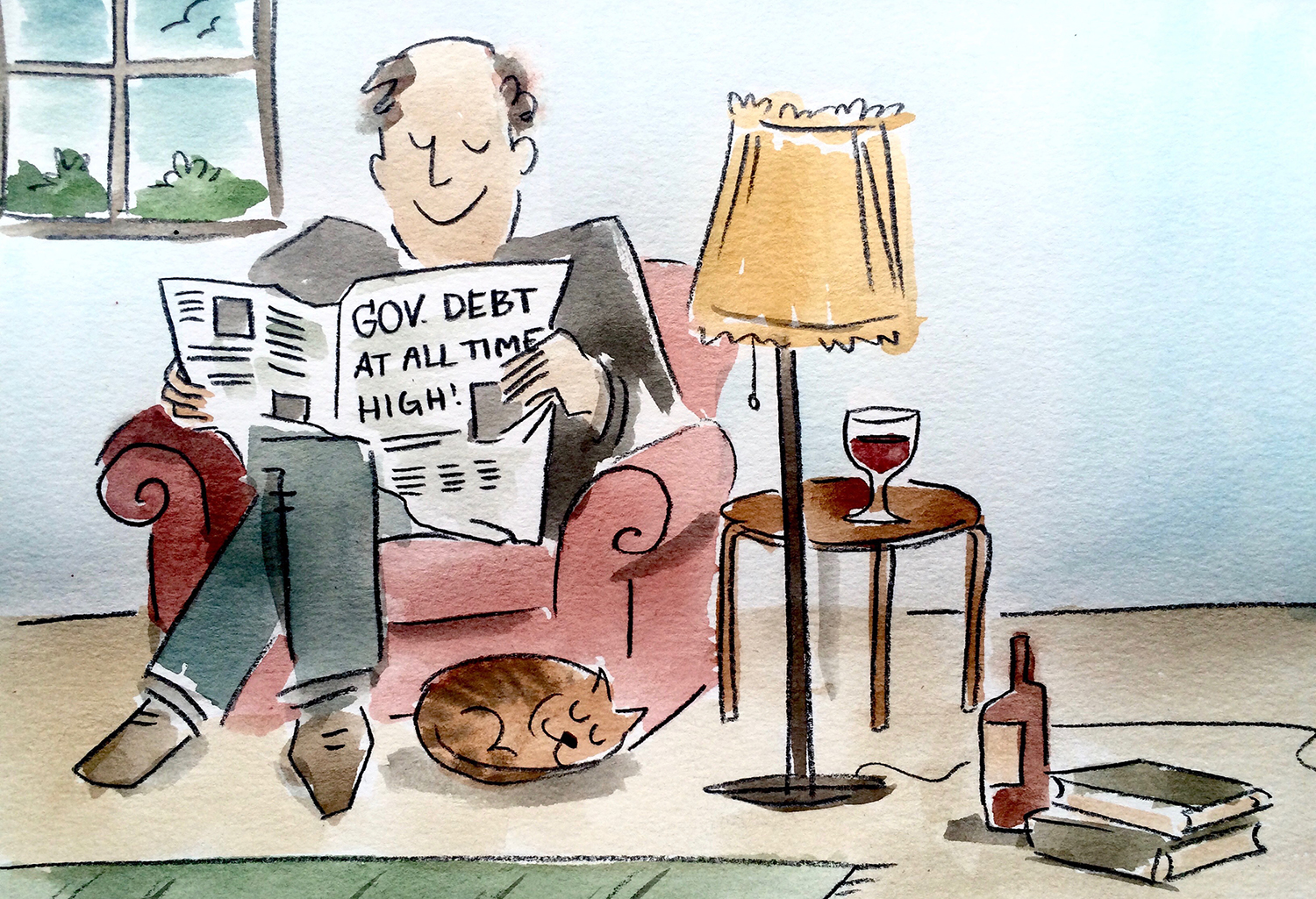When we talk about the government deficit, it’s often in the context of bad news. Whether it’s the cover of Time magazine, appointing us each a strangely precise debt of $42,998.12, or the US Debt Clock webpage, which portrays the debt as some sort of apocalypse countdown, we are meant to fear our government’s excessive spending. Standard economics warns against high deficits out of fear that government spending will “crowd out” private investment. This assumes that, when facing a limited money supply, the government will use up all the savings in the economy, in turn reducing private investment and raising interest rates. Clearly, this is not the case, as interest rates have been extremely low in the US despite our deficit.
Let’s look at deficit spending from an accounting perspective, where we divide the economy into three main sectors: the government, the private sector, and the foreign sector. The private sector includes all private entities (households and companies), and the foreign sector represents trade. This approach was pioneered by Wynne Godley and a detailed technical explanation can be found in this paper. In a given time, the amount of money spent and received by these sectors must add up to zero. In other words, a surplus of money in one sector always corresponds to a deficit in another. There can’t be one without the other. Here’s how this manifests in the United States: In a given year, the government spends X amount of money, and receives Y amount back in taxes. If the government spent more than it received, it means the private sector, along with the foreign sector, received more than they spent. Thus, the deficit of the government reflects forms the surplus of foreign and the private sector. In order to look at the foreign sector, we use the inverse of the capital account, which illustrates the trade surplus of the US. By using its inverse we are looking at the surplus of foreign countries against the US.
Applying this approach to the US, we can use the data from the US Financial Accounts to compile the following graph:

This graph illustrates the perfect mirror image between the government’s financial balance, the private sector balance, and the inverse of the capital account (because we are looking at the surplus of the rest of the world).
The mirror image from the graph clearly illustrates how the government deficit is reflected into a private sector surplus. If the government is spending more than it is taxing, it is stimulating the economy, not taking away from it.
